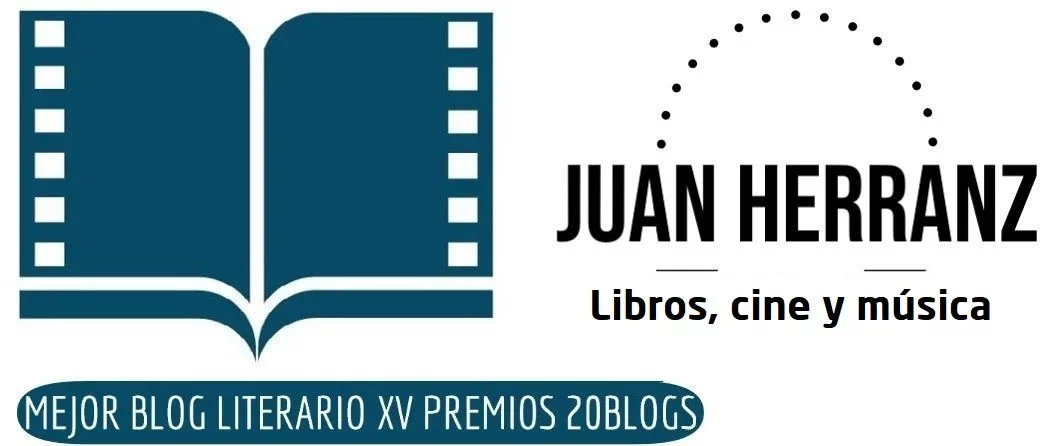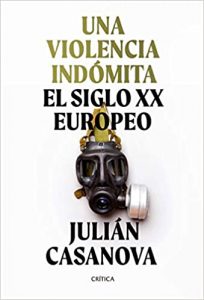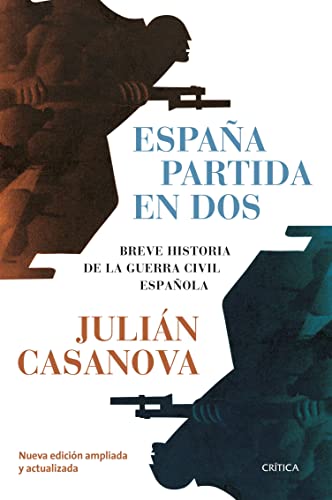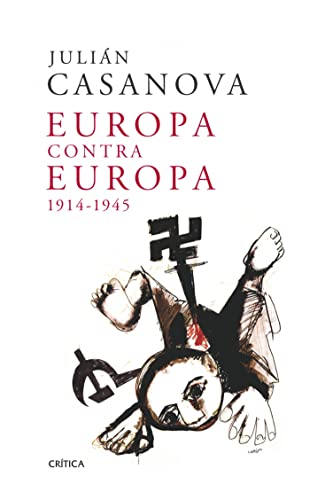The historian Julian Casanova he is one of the great disseminators of the future of XNUMXth century Europe and with greater zeal in Spain of the same century. It is true that its focus, let's say, tends to a historiography of revolutions, to those social convulsions from the grassroots movements. But it is that all social change comes from that spark of forced change, from the assault on power when the powerful wealthy make abuse the norm.
The point is that riots do not always succeed. At times republics and assaults were in attempts and as a response came more repression. But the history of defeats also serves to keep alive the memory, precisely, that injustices are fought. Julián Casanova rescues and disseminates with enough appeal to be a best-selling author without addressing the historical fiction with which other authors of his generation, such as Jose Luis CorralThey reach all types of readers. Readers closer to the hybrid narrative set typical of great historical fictions. These perfectly documented bases accompanied by the intrahistory capable of setting the scene in the facts to a greater extent.
But Casanova is enough and is overflowing with his taste for the essay and the chronicle of historical base. Because the story itself is exciting as soon as it is scratched and let alone when someone like Julián Casanova goes through the dermis of the facts and plunges us into the torrent of the most transcendent events.
Top 3 recommended books by Julián Casanova
An untamed violence
Not infrequently we hear that the demonstrations of today seem cut by the same pattern, as conducted and replicated by God knows what hidden interests. Maybe, maybe ..., and then the thing would come long ...
A new approach to the recurring and sometimes continuous manifestations of violence that, from anarchist terrorism to the wars of succession in Yugoslavia, marked the history of the European XNUMXth century with blood and fire. In it, colonial violence, ethnic cleansing, genocide, war and sexual violence stand out, where executioners, murderers and rapists created their own rituals of torture and death, practiced individually or in groups, seen by many more, victims, witnesses and apprentices of criminals.
There are multiple stories that overlap and intersect with each other, from Spain to Russia, from the Baltic to the Mediterranean, to discover the logic of violence. And in the narrative, the ideology of the race and the nation, the moments of crisis generated by wars and revolutions, and the projects of totalizing utopias stand out as conducting threads. A century of untamed violence, with visible or hidden scars of massacre and destruction. A past made present, remembered, forgotten, confronted, repressed.
Spain split in two
Spain has been split in two since 1936 for many horny imaginations. The thing would be resolved easily if the tricolor gave up their color and the shield gave the space of their shield. A single red, yellow and red flag and everything is fixed. But the conflict feeds and the debts serve not only to collect them but to weigh down any possibility of reconciliation.
The recent bibliography on the history of the Spanish Civil War is made up, above all, of specialized works for researchers. Today there is a lack of accessible syntheses that can fulfill the role that books such as Gabriel Jackson or Hugh Thomas played in their time, bringing the current state of knowledge closer to the average reader, which is all the more urgent after a few decades in which research has contributed new certainties and has dispelled old myths.
Nobody better suited to carry out this task than Professor Julián Casanova, professor at the University of Zaragoza, author of a great overview of the time –Republic and civil war- and of studies of as much value as De la calle al Frente, El Past Occult , The Church of Franco or Europe against Europe, 1914-1945. Your new "short story" will undoubtedly satisfy the many readers of your books.
Europe versus Europe, 1914-1945
Conflicts are neither created nor destroyed, they are only transformed, they change location. Today the wars are elsewhere. But the XNUMXth century was the era of wars in Europe. Twenty years passed from the Great War to World War II. In each great conflict, Europe was plunged into the darkness of bombs for five decades ... That was another world without a doubt where all Europeans had an enemy to kill.
The First World War, which decided the fate of Europe by force, after decades of primacy of politics and diplomacy, has been considered by many historians as the true dividing line of XNUMXth century European history, the traumatic break with the then dominant policies.
Communism and fascism, emerging from that war, became first alternatives and then poles of attraction for intellectuals, vehicles for mass politics, hotbeds of new leaders who, rising out of nowhere, starting from outside the old monarchical order and imperial, proposed radical breaks with the past.
The destruction and the millions of deaths that the First World War caused, the changes in borders, the impact of the Russian Revolution, and the adaptation problems of millions of ex-combatants, especially in the defeated countries, are at the origin of the violence and the culture of confrontation that were installed in many of the societies of that troubled period.
This book examines in detail, combining narrative and analysis, the Russian revolution and the rise of fascisms, democratic setbacks and authoritarian advances, the culture of confrontation and the consequences that all this had for a continent that ended in 1945 destroyed and broken into a thousand pieces.



